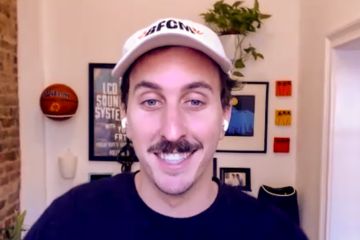Advice to a New Ecommerce Merchant

Mike Carroll is a weightlifting buddy who lost his job last fall. He had been an insurance salesman for 25 years and is now contemplating a new career. I asked him, “Have you thought about ecommerce?”
He had not.
Launching an ecommerce company intrigued him, but he was unsure where to start. Knowing many would-be entrepreneurs with similar concerns, I invited him on the podcast.
Here’s our conversation. The entire audio is embedded below. The transcript is edited for clarity and length.
Eric Bandholz: What’s going on?
Mike Carroll: In September, I was let go from a position I held for eight years and returned to school to finish my degree. I will end this May, and I’m exploring new opportunities. I’ve been in sales for 25 years. I’ve sold mortgage insurance to banks, companies, and credit unions. I’ve sold home and auto insurance through my own agency. In college, I sold Kirby vacuums door to door. I don’t recommend that. However, I learned to deal with rejection quickly.
You recently asked me if I’ve considered ecommerce. I hadn’t really. I’ve bought stuff online, and that’s about it. The possibilities for what I want to do and explore are wide open. I’d love to hear what ecommerce avenues you’d suggest pursuing.
I’ve been a business owner, but insurance is not a physical product like ecommerce. I wouldn’t know where to begin. What types of products would I sell? Do I start something from scratch? Do I find a broker to help buy a business? What kind of skills do I need?
Bandholz: You have negotiation skills from your sales background. Those apply to ecommerce with vendor management, employees, and more. The direction you take in ecommerce depends on what you’re good at and what excites you. I love creating a business from scratch, obtaining that first customer, and scaling up.
Another option is buying a business. That would suit folks who thrive at systems, organization, and optimization. They could find opportunities with inefficient companies and make improvements. However, buying a business typically has more risks.
I recommend starting from scratch if you’ve never had a business because the risk of placing, say, a $1,000 inventory order is low compared to buying a million-dollar company.
Plus, a new business can outsource many tasks. Third-party logistics companies — 3PLs — can store, pack, and send your orders. Freelance consultants can photograph products, build and manage the website, and market your items on Facebook and Google, for example. Product designers and manufacturers can engineer and produce inventory. In that model, you’re the quarterback. It’s not unrealistic for a solo entrepreneur to build a company doing $1 million a year with no employees.
It would be hard work. Again, many outsourcing options exist worldwide, such as in Eastern Europe, Ukraine, and Poland. The Philippines has a lot of talented workers who also speak English.
Carroll: How do smaller ecommerce firms compete with Amazon?
Bandholz: Finding products that cater to enthusiasts is the best way to go from zero to one. A lot of successful entrepreneurs study Amazon data for top-selling products. They read the reviews of those products for opportunities to improve and then develop their own version based on that info and launch it on Amazon. They improve a product that many folks are already interested in, in other words.
Another option is serving an unmet need to folks who will pay more for a product. We had a guest on the show who sells chinchilla cages. His inventory is wire. When he gets an order, his team makes the cage and sends it out. He doesn’t need storage space or production costs for unsold finished cages. He drives efficiency through manufacturing. He has employees and manufacturing costs, but his niche is specific. He provides chinchilla owners with what they need.
Carroll: I know what I like, but the market may not need it.
Bandholz: The right product for the right price to the right customer will make your life easier. Avoid products that are very similar to competitors’ or are too expensive to make or buy. Find a unique product that only your company offers. Emphasize your brand. An excellent product with terrible branding is easily replicated by competitors.
My perfect ecommerce product would be small and light so I could easily ship it. It would be expensive — something consumers would pay a lot for and buy regularly that wouldn’t go bad. That’s the holy grail of products. It’s also what seemingly every merchant is looking for.
Look at the world. Everything is a product. Ask yourself, “Would I want to sell that? What would be the advantages?”
A friend who’s been on the podcast sells his own videos of dancing courses that couples can do at home. The business is called Show Her Off. You could do that as a golf instructor given your expertise in that sport. Target the person who wants to learn golf to make business connections. Sell the course for $500.
How can folks reach out to you?
Carroll: You can find me on LinkedIn.







